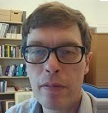8.6: The Feynman Diagrams of Quantum Chromodynamics (QCD)
( \newcommand{\kernel}{\mathrm{null}\,}\)
There are two key features that distinguish QCD from QED:
- Quarks interact more strongly the further they are apart, and more weakly as they are close by – asymptotic freedom.
- Gluons interact with themselves
The first point can only be found through detailed mathematical analysis. It means that free quarks can’t be seen, but at high energies quarks look more and more like free particles. The second statement make QCD so hard to solve. The gluon comes in 8 colour combinations (since it carries a colour and anti-colour index, minus the scalar combination). The relevant diagrams are sketches in Figure 8.6.1. Try to work out yourself how we satisfy colour charge conservation!



